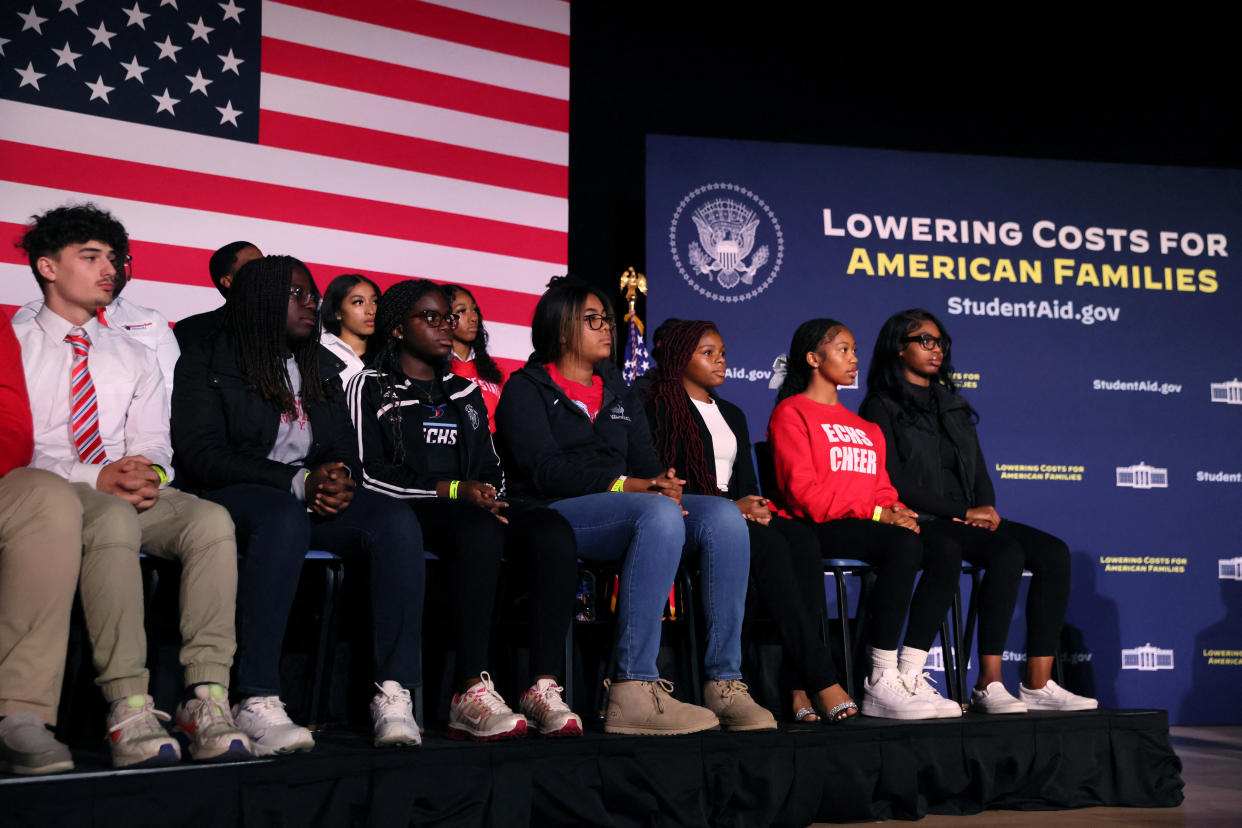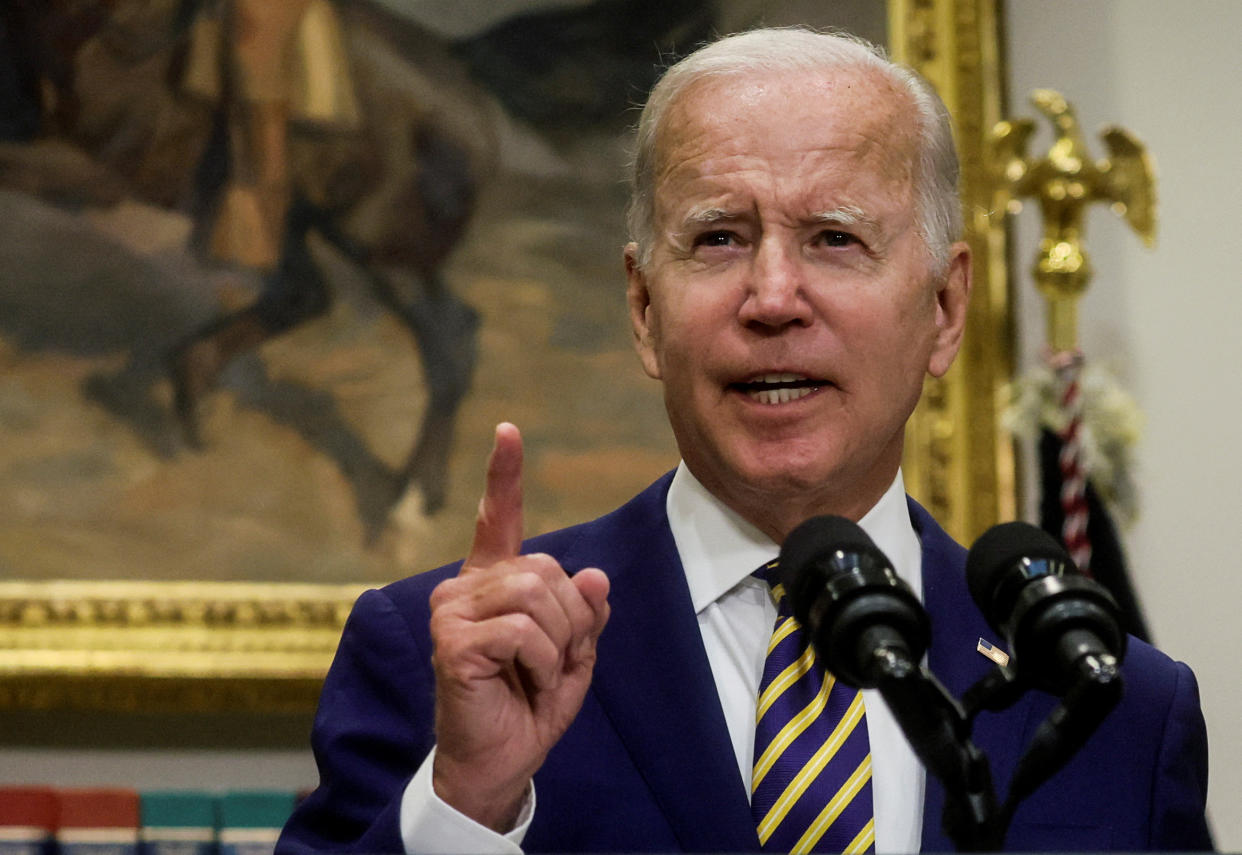Get ready to rumble: SCOTUS hearings on student loan debt relief about to begin
The Biden administration’s ambitious program to forgive billions of dollars in federally supported student loan debt is set to face multiple challengers before the U.S. Supreme Court on Tuesday, when the court is scheduled to hear arguments in two cases that dispute the plan's legality.
The plan is expected to impact at least 26 million student loan borrowers who either applied for, or qualified for relief before legal challenges put its roll out on hold.
The U.S. Department of Education, which adopted the plan, estimates that as of December 2022, approximately 43 million borrowers held federally backed student loan debt totaling more than $1.6 trillion. However, forgiveness, as envisioned, is available only to federal loan borrowers with annual incomes under $125,000 (or $250,000 per household). Those borrowers are eligible for up to $10,000 in forgiveness, and borrowers who also received Pell Grants can receive up to $20,000 in relief.
The nonpartisan Congressional Budget Office estimated in September that the program, if implemented as planned, would cost U.S. taxpayers $400 billion in present value. Critics say that figure underestimates the scope of the cost to U.S. taxpayers.
Here are the cases the Supreme Court will consider:
Biden v. Nebraska, is brought by the administration against six republican state attorneys general — Arkansas, Iowa, Kansas, Nebraska, Missouri, and South Carolina – who say the forgiveness plan requires, yet never received, Congress' authorization. The AGs also say that with fewer loans on their books future state tax revenues will suffer. Missouri specifically argues that its MOHELA (Missouri Higher Education Loan Authority), which is the nation's largest loan servicer, will collect less interest than planned on it's furnished loans.
Another case: Department of Education v. Brown, is filed by two student loan debtors, one who doesn't qualify for relief under the plan, and another who qualifies for partial forgiveness. They too argue that the Education Department needs Congressional approval to adopt its plan—and that they were improperly denied the opportunity to comment on its provisions. Their case is backed by conservative advocacy group, Job Creators Network Foundation.

There are multiple questions before the high court. One is whether the six states and the students have standing to maintain their challenges in court. Standing is a legal doctrine that prevents litigants from going forward with a federal lawsuit, unless they can show the disputed action will cause them particular harm — for example, that they would suffer economic shortfalls if not permitted to have their grievance heard.
In addition the justices will weigh whether the forgiveness plan is authorized by a group of laws that together delegate various powers to the Department of Education to modify federal student financial assistance programs. They'll also consider whether in adopting the plan the administration followed proper notice and comment procedures.
As justification for its authority to forgive debt, the administration cites three pieces of legislation: Title IV of the 1965 Higher Education Act, which authorizes the Education Secretary to administer the department's portfolio of student loans; the 2003 HEROES Act (Higher Education Relief Opportunities for Students Act), which expanded the Education Secretary's student loan administration powers; and the 2020 CARES Act (Coronavirus Aid, Relief, and Economic Security Act), which declared the Covid-19 pandemic a "national emergency" and provided economic assistance to American workers, families, and businesses.
Designed as a temporary law and later made permanent in 2007, the HEROES Act was originally crafted to relieve student loan debt for military members who served in Iraq and Afghanistan. Challengers say the Act doesn't extend to offer the widespread pandemic relief offered under the administration's forgiveness plan.
However, the text of the law states that when the president declares a national emergency, the Education Secretary "is authorized to waive or modify any provision” for statutes concerning federal student loans, for both military personnel, as well as for others impacted by the emergency.
Both the Trump and Biden administrations tapped the HEREOS Act during the Covid-19 pandemic to pause student loan repayment obligations and suspended interest accrual on all federally held student loans — decisions expected to cost the government more than $100 billion.

In its application to the Supreme Court to stay the Northern District of Texas court's ruling in the Brown case, the Justice Department argued, "[T]he entire purpose of the HEROES Act is to authorize the Secretary to grant student-loan-related relief to at-risk borrowers because of a national emergency — precisely what the Secretary did here."
Dozens of organizations and individuals, including civil rights groups, labor unions, legal experts, and state governments, filed amicus briefs or “friend of the court” documents in support of the Biden administration's plan.
Meanwhile, more than 170 republican lawmakers signed their names in support of amicus briefs that oppose the debt relief.
In agreeing to take up the case, the court kept in place an injunction that prevents the White House from granting the promised debt relief.
The moratorium on required student loan repayments, put in place by the Trump administration and carried forward by the Biden administration, is slated to sunset either 60 days after the Supreme Court issues its decisions, or 60 days after June 30.
The Supreme Court's decisions in the cases are expected before the end of June.
Alexis Keenan is a legal reporter for Yahoo Finance. Follow Alexis on Twitter @alexiskweed.
Follow Yahoo Finance on Twitter, Facebook, Instagram, Flipboard, LinkedIn, and YouTube
Find live stock market quotes and the latest business and finance news
